We are developing the social individualist meta-context for the future. From the very serious to the extremely frivolous... lets see what is on the mind of the Samizdata people.
Samizdata, derived from Samizdat /n. - a system of clandestine publication of banned literature in the USSR [Russ.,= self-publishing house]
|
Terrible news from Paris of the fire at Notre-Dame Cathedral. As I write, I understand that not all is lost of this masterpiece. The collapsed spire was a 19th Century addition, but the damage must be immense.
When I was last in Paris, over a decade ago, I recall looking at Notre-Dame and shuddering as I thought of it as ‘destroyed’ (not that I believe that there are ‘holy’ places), as, during the French Revolution, it was closed as a cathedral and was declared a Temple of Reason. When egalitarians appeal to reason, you know heads will roll.
There followed years of neglect, before, AIUI, in 1905, the French State (which had assumed ownership), effectively provided the cathedral to the Catholic Church as a permanent ‘tenant’. The cause of the fire may well be nothing more sinister than incompetence, perhaps we will never know. I would like to think that commercial aviation levels of caution would go into fire precautions in such a building, (perhaps they did) which, whatever your view of the use or purpose of it, is surely one of the great buildings on Earth. However, the neglect under State ownership has continued, and yesterday’s cathedral was a revived corpse of the pre-Revolutionary building.
It is pretty shameful that neither Hitler nor the Kaiser managed to do as much damage to Notre Dame as the fire. It had survived them, and rioting Hugenots. In WW2, it was relatively unscathed. Some lost mediaeval glass was, I understand, replaced by abstract crap in the post-War period, so the scoundrels were already circling.
Perhaps the fire is a Randian moment, wasn’t there a train crash in a tunnel for which ‘no one is responsible’? Is the burning down of a ‘temple of reason’ an allegory for France after its great economists are all-but forgotten?
Does it matter if, in rebuilding Notre-Dame, stone that is geologically ancient is replaced by other just as ancient stone, carved a few mere centuries later? Should, as with the Campanile in Venice, the order be: ‘Com’era, Dov’era.‘. ‘How it was, where it was.‘?
Or will something more ‘inclusive’ replace it or be grated on to it?
Last night I attended a meeting, and although I did not have any arguments with anyone about fake news, I did meet with Vera Kichanova, and learned from her that her Adam Smith Institute “report” (aka: argument in favour of) micro-housing was to be published today. Good. I’m for it.
ASI announcement by Matthew Lesh here. The entire thing can be read here.
I don’t agree with Vera’s title, “Size Doesn’t Matter”. I think that when it comes to where you live, size matters a lot. You don’t want somewhere too big for you, or too small for you. Perhaps the ASI is hoping that, by having a silly title, they will sucker many of those who hate the idea, and who would otherwise ignore it, into instead denouncing it because of its title, thus spreading the word about it. The Trump technique, in other words.
For many, “micro” would indeed be way too small. But, for quite a few others, micro-living would be much preferable to a long commute. I am in favour of people having choices along such lines rather than at the far end of a line. And I am in favour of entrepreneurs having the freedom to bet their time and money contriving such choices.
I’ve not yet read Vera’s piece yet (this being one of those something now rather than something better but later postings), so I don’t know if she makes this point, but one very good reason why many might now be okay with a much smaller living space is that home entertainment and home education can now occupy a tiny fraction of the space that they used to, about one or maybe two generations ago. You can literally now carry your entire entertainment system, and your entire library – words, music, movies, TV shows, the lot – in a small bag. In other words, you can now not merely eke out your existence in a tiny dwelling space, you can actually have a life while living in such a micro-home.
One final point, before I hurry back to the rest of my life. Vera Kichanova works for Zaha Hadid Architects, which is all part of why I believe it to be important that Zaha Hadid Architects thrives.
I encountered this photo, of a brand new building in Belgium, at the Twitter feed of something called Architectural Revival.
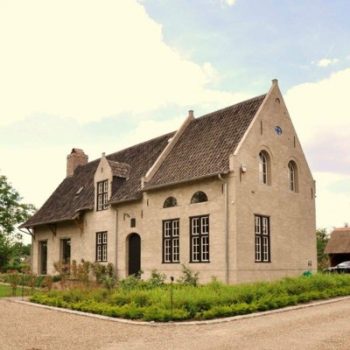
Right now this photo has pride of place there, but just to be sure, this is the Tweet in question. There are several more photos to be seen there of similarly brand-new-but-looking-old buildings, also in Belgium.
So, let all of us who are that way inclined have a comment bunfight about what architecture is the best, ancient, or modern, or fake-ancient.
Personally I favour all three styles, and like it when they are in close proximity to one another. Modernity, unrelieved by either genuine or fake antiquity can get very dreary. But genuine antiquity everywhere can feel rather dispiriting too, because it can feel like you are living or working in a gigantic museum rather than in a place with a future, as well as a mere past. Paris sometimes feels a bit like this to me, especially compared to London which absolutely does not.
To be a bit more precise, I like skyscrapers, whether fake-antique (as they originally were in Chicago and New York) or modern, as in the City of London and nearby spots now. But nearer to the ground I like antiquity to remain, and I would favour more fake-antiquity, especially for many smaller buildings that don’t reach for the sky, than is the case in London now.
Above and beyond my mere tastes, or yours, I favour freedom of choice, in architecture as in all such lifestyle decisions. If you want to build a pretend Scottish Baronial Castle on your plot of land, good luck to you. I think if that was the rule rather than merely something that used to happen if you were rich a hundred and fifty years ago, architecture would be much more fun to look at, and in general, much better.
For more concerning such arguments, see this recent piece by Roger Scruton.
The Sage of Kettering and I have been on another day trip, this time to Lincoln. We have also visited a mystery town I shall leave you to guess below, and also at Stow-by-Lindsey, a tiny village west of Lincoln, with a now incongruously large Minster, Anglo-Saxon in origin, having been added to over the years.

It also claims to have the earliest known Viking graffito in England, a carving of a long ship. It is not clear if this was a marauder or a merchant, but he presumably came up river to here, the Humber is not far away.
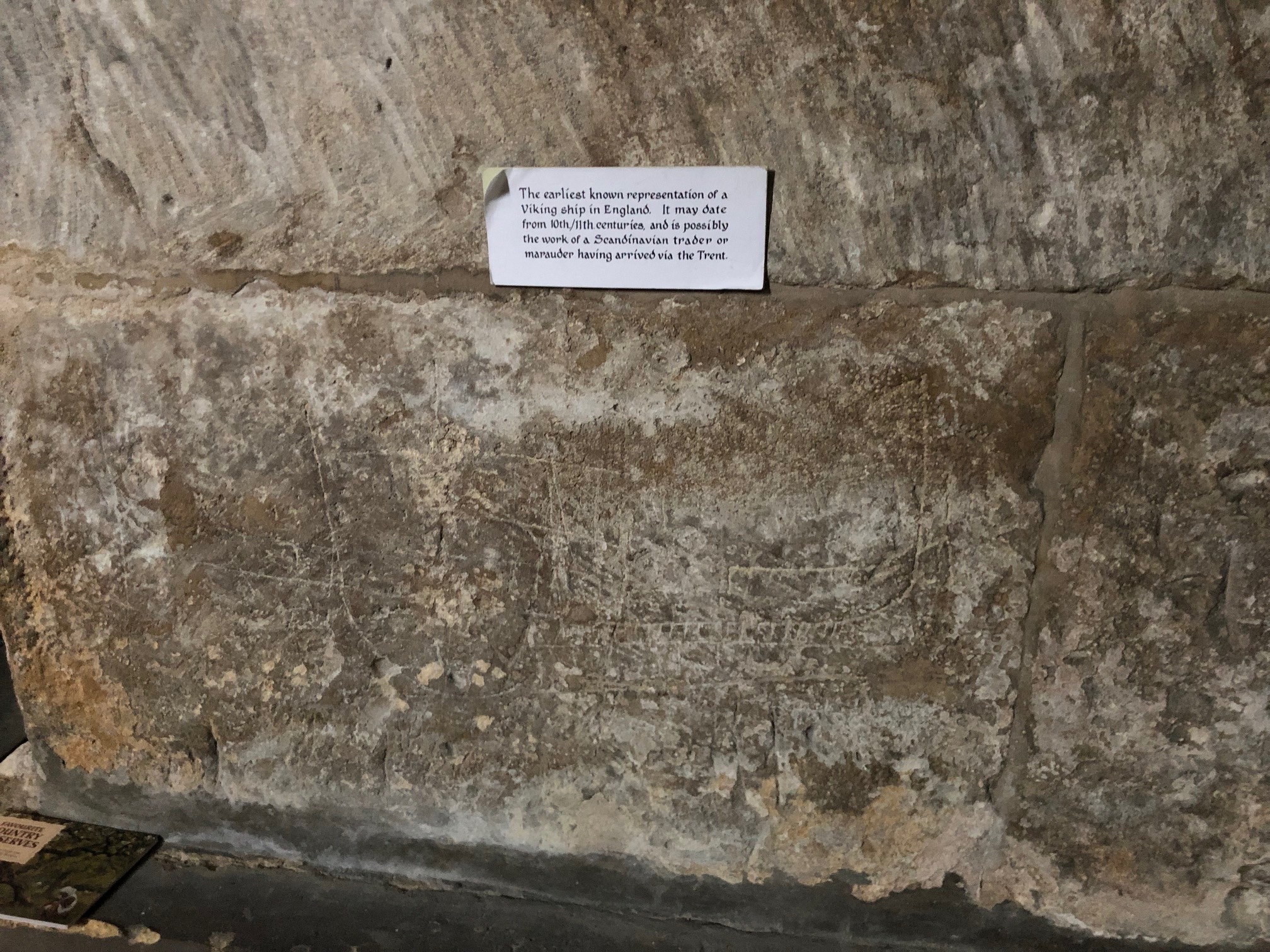
It also has a curious face on the font.

And an austere interior, perhaps barer than in its glory.
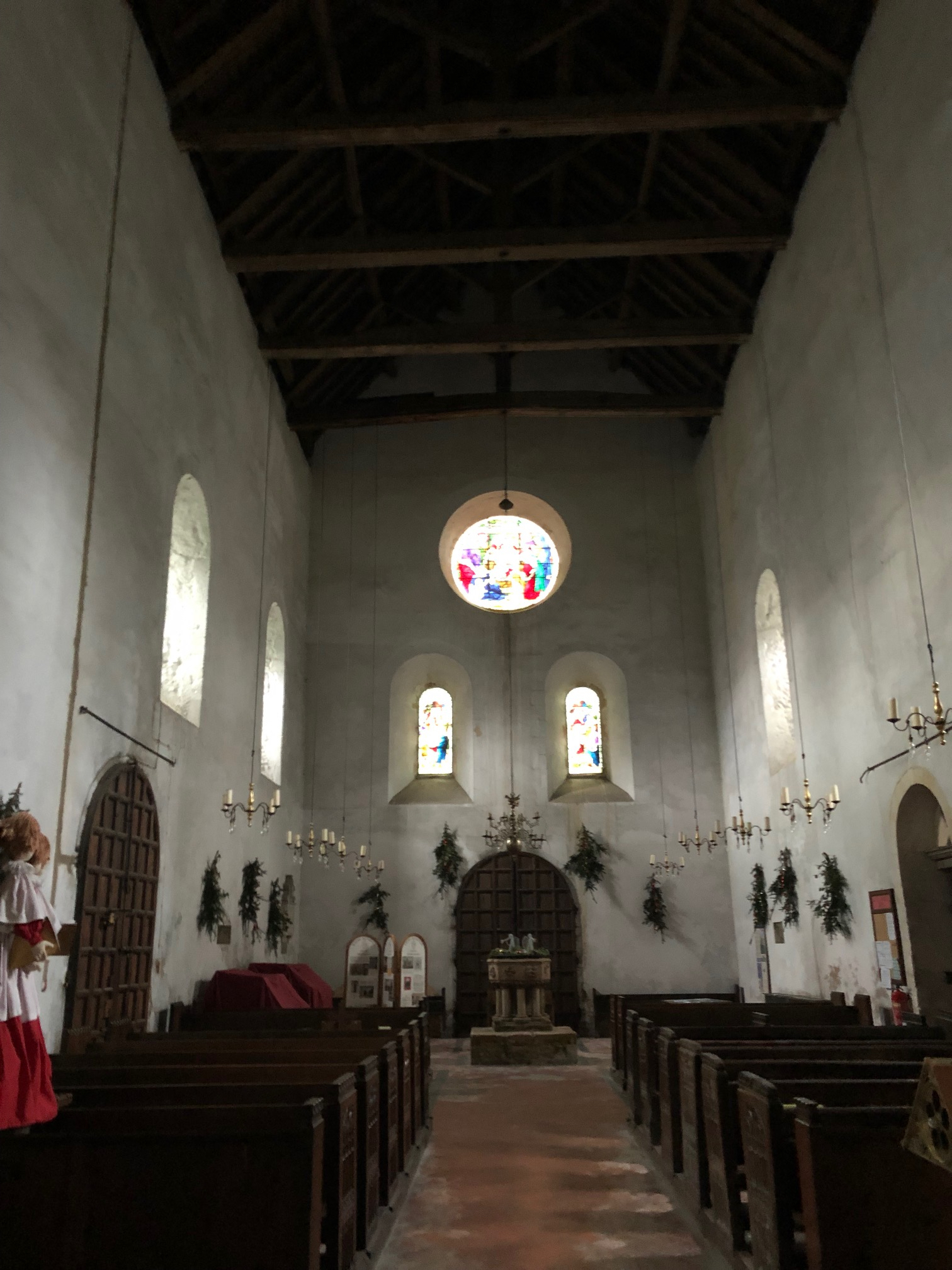
→ Continue reading: A Lincoln Lark
One of the more significant libertarians on Planet Earth just now is Patrik Schumacher, whom I have mentioned here before, several times.
Until recently Schumacher was the Number Two at Zaha Hadid Architects. But following the death of Zaha Hadid, he is now the Zaha Hadid Architects Number One. So, an important question for libertarians is: Can Zaha Hadid Architects keep going successfully, without Zaha Hadid herself, under Schumacher’s leadership? Given the dominant political attitudes within the architecture-and-design world these days, there are surely a lot of people now hoping that the answer will turn out to be: No.
A report, complete with dramatic pretend-photos, that you can read and see here, courtesy of the Daily Mail, of a new concert hall that Zaha Hadid Architects will be building In Yekaterinburg, give cause for optimism.
With concert halls, everything depends on the acoustics. It can look like the Palace of Versailles, but if it sounds wrong it’s a turkey. But acoustic science is now such that I am optimistic that this will be judged a successful concert hall, sounding good as well as looking stylish in a Zaha Hadid sort of way:

The point of this posting is that if Zaha Hadid Architects continues to thrive as it seems to be thriving now, that will be a win for libertarianism, because it will be such a very big personal win for Patrik Schumacher. Comment away all you like, of course – can’t stop you, wouldn’t want to. But whether you personally like the look of this new concert hall is beside my main point here.
As the late Chris Tame used to say: we need our people everywhere, and architecture-and-design is an important somewhere. Schumacher reminds me of the late Peter Bauer. Bauer was in a minority of about one in the world of foreign aid, back when he was alive and arguing. Schumacher is likewise something of a lone voice in his world in an equally significant way.
Podcasts don’t suit everyone. Simply, for many, they tend to take too long to make their points. They have an additional drawback for me, which is that I love to listen to classical music, i.e. the sort of music which can also demand a lot of time to make its various musical points.
This morning, for instance, I was happily listening to one of the very longest symphonies of all, Mahler 3.
But, I paused it. I paused it because my Twitter feed had told me about a podcast. I am listening to this podcast now. The guy asking the questions is someone American whose name I didn’t catch from the Centre for Innovative Governance Research, and the Podcastee, so to speak, the man answering the American guy’s questions, is Patrik Schumacher. Patrik Schumacher is the boss of one of the world’s most formidable architectural practices, the one founded and bossed, until she recently died, by the formidable Zaha Hadid.
Like classical music, the design of architecture, and especially of urban environments on a larger scale, seems to encourage dirigiste habits of mind and of action, politically as well as aesthetically. City planners tend to assume that cities have, so to speak, to be conducted (the German word for conductor being dirigent). Conducted, that is, by them. Well, they would, wouldn’t they? Schumacher challenges these kinds of assumptions.
The American guy asking the questions has been very badly recorded. But it’s mostly Schumacher, and Schumacher, thank goodness, mostly sounds somewhat better. I am learning a lot about how Schumacher thinks and about what he does. You might too. The podcast lasts a bit over an hour.
Mahler 3 will have to wait.
I am always on the lookout for elevated platforms, natural or artificial, to look out over London from, and to take photos from. And as luck would have it, one of my favourite such platforms is one that I live directly under. Yes, if I go up to the roof of my block of flats, I can see, and I can photo, things like this:
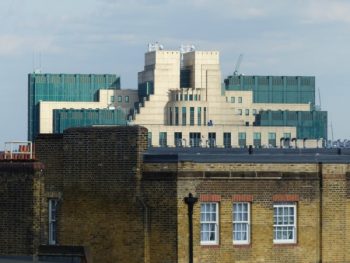
That thing being the MI6 Building, made famous by the Bond movies. In the Bond movie that they were showing on Brit TV earlier this very evening, this building suffered an explosion. Dame Judi Dench looked on, aghast.
Another entertaining thing to be seen from this spot is the new US Embassy, now nearing completion just up river, as luck would have it, from the MI6 Building. Those peculiar structures sticking out to the side, on both sides as we look in the photo below, intrigue me. Officially they are sunshades. So, nothing to do with stopping people from eavesdropping? Absolutely not. Never crossed their minds. Mind you, there won’t be any such structure on the windows facing us, so maybe this is true. But, I prefer to believe otherwise:

All around this new US Embassy there is a huge building boom in progress. That Special Relationship that people keep saying is about to end remains pretty special, I would say.
Whereas the cranes working away around the above building are there to build it, the crane in this next picture is there to dismantle the big block of a building that we see. This is “New” Scotland Yard. The Metropolitan Police have already moved out, to an even Newer Scotland Yard, nearer to the river.
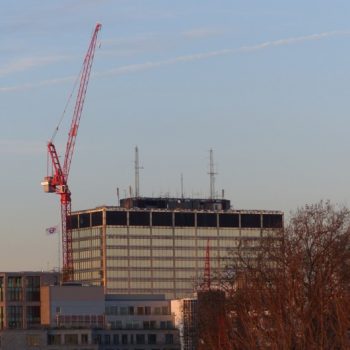
Next up, the two familiar towers attached to the Houses of Parliament, Big Ben and …, you know, … the other one. On the far side of the river but directly in line, The Wheel.
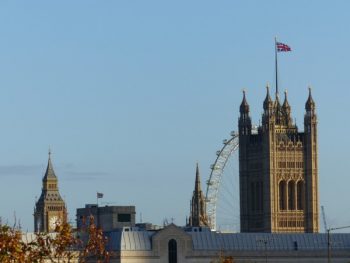
Finally, here are two snaps of how the same bit of the skyline was looking last night, just after midnight. I had guests with me last night, and after we had counted in the new year while watching these fireworks on the telly, I suddenly realised that we could see these same fireworks for real, if we just ran up a few staircases, and provided the fireworks kept on going for a bit. Which we did and they did:

Such is the quality of the cameras on mobile phones these days that several of my guests were also able to take photos.
In the above picture, The Wheel is totally blotted out, but in this final picture, you can clearly see it:

All of this was in aid of everyone wishing everyone else a Happy New Year, and I wish that to all my fellow Samizdatistas, and to everyone else who reads this.
This explains a lot:
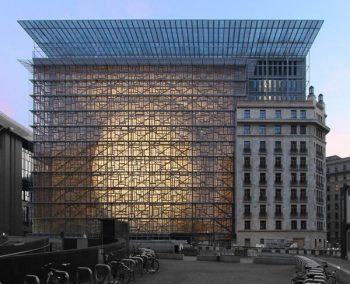
The European Union is moving into a new headquarters in Brussels, which features a huge glass atrium enclosing a bulging, lantern-like structure.
See an earlier posting here from way back about Parkinson’s Other Law.
LATER: Parkinson explains.
Incoming, from a libertarian friend whose views I always pay attention to:
Have you seen article about Patrik Schumacher of Zaha Hadid on Dezeen? Uncompromising libertarian attitude to solving housing crisis. Worth linking to …
Yes I have seen it, but have not yet read it (or watched it). I was definitely already going to attend to this, and now I definitely will. But, no need for me to do that before mentioning it here. Read and watch here.
Earlier Samizdata Patrick Schumacher posting here.
Schumacher will also be speaking, at this Adam Smith Institute event in early December, about “Governing private cities”. I already have my ticket.
In central London there is an clapped-out old building. One option would be to demolish it and replace it with something nice in steel and glass. Another option, as Michael Jennings likes to point out, would be to demolish it and replace it with tarmac. The building in question stands bang in the middle of two major thoroughfares causing a huge bottleneck.
So, what do our politicians think should be done? Well, they’re not thinking in terms of steel, glass or tarmac. They’re not even thinking of demolition. They think that £5bn of taxpayers’ money should be shelled out on its restoration. Which means it will be at least £10bn by the time they’re finished. If we’re lucky. You could build a lot of hospitals for that kind of money.
You may be familiar with the building in question:
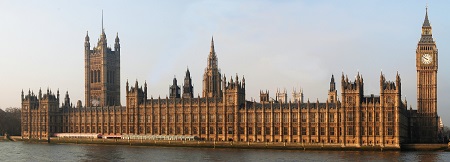
Now I accept that for the time being we have a state and that representative democracies are usually better than the alternatives. I also accept that it is probably difficult to do politics online so Parliament needs some kind of physical location. But where?
Luckily there is a place that seems to cover all the bases. It is easy to get to. There is plenty of land for development. It would take politicians out of the metropolitan bubble. And it would gently remind them of the consequences of over-regulation. Ladies and gentlemen, I give you the location of the new Mother of Parliaments:
Milton Keynes.
If you type “window tax” into google, and click on “images”, you get images like this one:
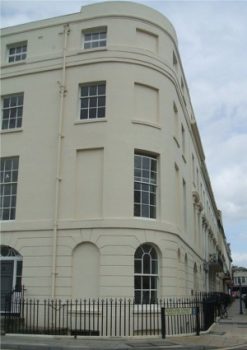
That being the first image that wikipedia shows you, in their entry on the Window tax.
Says wikipedia about this tax:
The window tax was a property tax based on the number of windows in a house. It was a significant social, cultural, and architectural force in England, France, Ireland and Scotland during the 18th and 19th centuries. To avoid the tax some houses from the period can be seen to have bricked-up window-spaces (ready to be glazed or reglazed at a later date). In England and Wales it was introduced in 1696 and was repealed in 1851,
London, and presumably all the other cities of Britain, still contain many such bricked-up windows, that date from this time.
But yesterday, I saw a new block of flats, still in the process of being constructed, just a few dozen yards from my own front door.
The front of which looks like this:
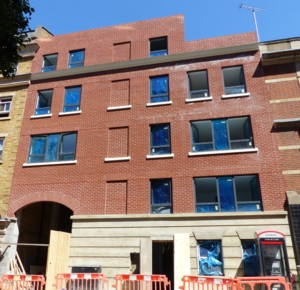
Let me be clear. There is a vertical row of bricked-up windows there, in between the real windows. And you can clearly see that this is a brand new building, not even yet occupied.
Here is a close-up shot of an individual bricked-up window:
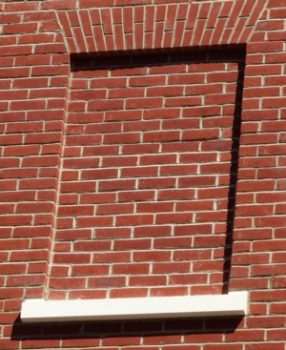
I have long known the bare outlines of this window tax story, as I guess most of my fellow Brits do also, especially if they live in towns or cities. Windows were taxed, so people filled the windows in, to avoid paying the tax.
So, my first – outraged and spasmodic – reaction to this new building, when I saw these non-windows was: My God, have they brought back the window tax?
But, on further reflection, I further guess that this is isn’t the first time that recent property developers have created bricked-up windows, or what look like bricked-up windows, to create, pretty cheaply, the suggestion of antiquity in an otherwise blandly modern building.
When I see other bricked-up windows, I will no longer assume that they date from the time of the window tax. Maybe they merely allude to this time.
But, am I missing something? Is there a more practical purpose to such non-windows? Is it helpful to create windows that can later be un-bricked-up (bricked-down?), at some future date? Does it help to think about maybe wanting a window that you don’t want now, beforehand, just in case?
Is this a mere part of the construction process. Will these bricked-up windows all turn into real windows very soon, before anyone even moves in?
Or are there quite different reasons for making a new bricked-up window, which I am unaware of? Perhaps so. In fact, probably so. And if so, I hope that commenters will perhaps enlighten me.
One of my daily internet visits is to a site called Dezeen. Here I learn about lots that bores me, involving designers making small buildings shaped like boxes rather than ornamented, and about lots that interests me, including such things as much bigger and (to me) much more interesting buildings that are being dreamed of, built and celebrated.
On the matter of Brexit, Dezeen reported that the the overwhelming majority of “creatives”, in London and in the world generally, favoured and still favour Remain. These creatives were very angry when they learned that a majority of British voters did not share their views.
But Dezeen also had a recent link to a creative who sings a very different sort of ideological song to that sung by most of the kind of creatives whose work and opinions Dezeen reports on. I give you Patrik Schumacher:
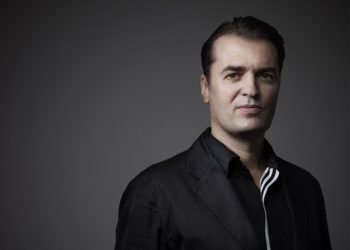
Patrik Schumacher has written an opinion piece for Archinect, with these words at the top of it:
Brexit: a chance to roll back the interventionist state and unleash entrepreneurial creativity …
I have very little in common with the arguments of the Leave Campaign, and in particular reject the anti-immigration thrust of the Campaign. However, I welcome Brexit as offering an enhanced ability and chance to experiment with new policies that dare more economic freedom.
Later on in the piece, we read stuff like this:
I am convinced that the next prosperity potentials of our civilisation can only be explored and discovered if the straight jacket of the nanny state is gradually loosened and dismantled. (The bigger the scale of a country or block, the easier it becomes for the state to expand its scope. That’s why I favour small countries: they must keep their state action small in scope and cannot afford to erect trade barriers or impose heavy tax and regulatory burdens.) It’s time to roll back the state and for us to take the risk of giving more freedom and self-responsibility to us all, unleashing entrepreneurial creativity, organisational experimentation as well as individual aspiration and empowerment.
It’s those particular sorts of libertarian phraseology that I find so intriguing. “Roll back” the “interventionist state”. “Unleash entrepreneurial creativity”. “Nanny state”. “Heavy tax and regulatory burdens”. Above all the simple: “Economic freedom”. This guy is one of us. There really can be no doubt about it. He has been reading the same kind of stuff that Samizdata readers have read, in among training to be an architect and then working as an architect. Any libertarians who doubt the ability of libertarian ideas to spread beyond the confines of mere libertarians should read this piece, and rejoice.
Patrik Schumacher works for Zaha Hadid architects. The recently deceased Zaha Hadid was rumoured to be a very “difficult” woman to work for. Bossy. Opinionated. Highly individual in her behaviour and in her designs. I don’t know much about Hadid other than noticing when she recently died (at far too young an age for an architect). But if Patrik Schumacher was the sort of man she hired to do her bidding, I am starting to suspect that she too may have been some sort of libertarian, maybe in the closet, but maybe of the in-your-face variety.
There’s lots more I could say about this, but my basic point is: how interesting, and how encouraging.
|
Who Are We? The Samizdata people are a bunch of sinister and heavily armed globalist illuminati who seek to infect the entire world with the values of personal liberty and several property. Amongst our many crimes is a sense of humour and the intermittent use of British spelling.
We are also a varied group made up of social individualists, classical liberals, whigs, libertarians, extropians, futurists, ‘Porcupines’, Karl Popper fetishists, recovering neo-conservatives, crazed Ayn Rand worshipers, over-caffeinated Virginia Postrel devotees, witty Frédéric Bastiat wannabes, cypherpunks, minarchists, kritarchists and wild-eyed anarcho-capitalists from Britain, North America, Australia and Europe.
|





















